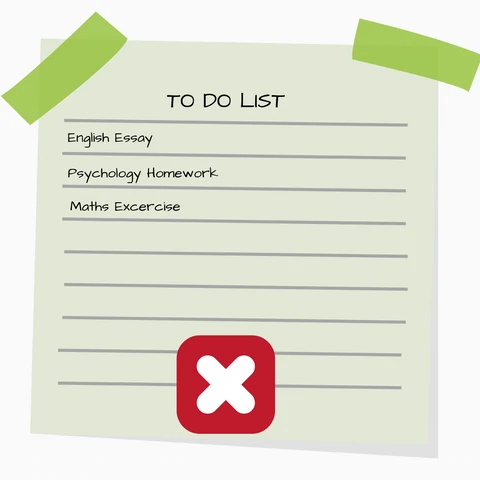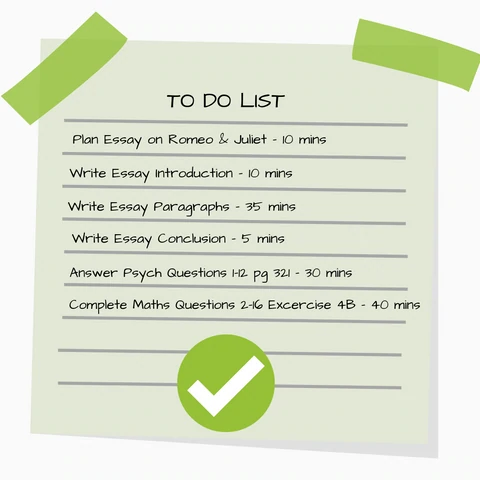“I write a to-do list before every study session but never actually get it all done…” Sound familiar? This is a very common problem, in fact 41% of to-do list items are never completed. But why is that?
Not getting through a to-do list can often be a result of procrastination and a poorly written list. But how can you stop it? There are a few simple tricks you can use to write better to-do lists which will put an end to procrastination and increase the likelihood of getting everything done.
We have put together three simple steps to writing awesome to-do lists that will help you get everything ticked off that list in less time:
Step One: Break it down and get specific
Instead of just writing “English Essay”, which seems like a nightmare, break it down to smaller more manageable tasks; The essay introduction, paragraphs and conclusion can each be their own tasks.
Similarly with a large assignment you can break it down to specific manageable tasks for example; research the topic, powerpoint slides and oral presentation notes.
For homework exercises, get specific with how many questions you need to do. Instead of “Biology Homework” which could mean anything from 2-100 questions, try writing the specific task: “Biology Questions 1-9, pg 98”.
Having smaller more specific tasks registers as “easier” in your brain which means less stressful.
Step Two: Start each item with an action
After breaking down your homework to specific tasks make sure to add action words! Planning an essay and writing an essay are two distinct tasks. So make sure you write them as two separate items on your list : “Plan Romeo & Juliet essay” and “write essay introduction”.
Using verbs like “complete” or “answer” before an item on your list allows it to register in your brain as a task that needs to be done rather than a simple statement: “Complete Psychology Questions 6-10, pg 132” or “Answer Sociology Questions 4-7, pg 97”.
Step Three: Assign time limits to each task
Finally, next to each task, write down the amount of time it should take to get done, in minutes.
Note: Don’t use time frames (5:30pm – 5:50pm) instead use time limits (20 minutes). By using time limits instead of time frames you are not feeling restricted to complete it by a certain time of day, instead focusing on how long it takes you to actually complete the task. Use an alarm or timer to keep you accountable! This is a great way to learn how to complete questions within time limits and help get all your homework done faster.
By creating a more specific task list with broken down, specific tasks with clear actions and time limits you can get all your homework and assignments done with less procrastination and less stress!








Leave A Comment